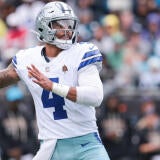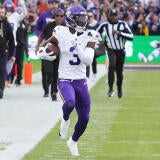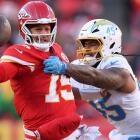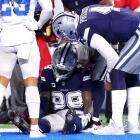
What's gone wrong with Patrick Mahomes and Chiefs passing attack and how it can be fixed
The return of Rashee Rice and Xavier Worthy will help, but that won't be the cure-all
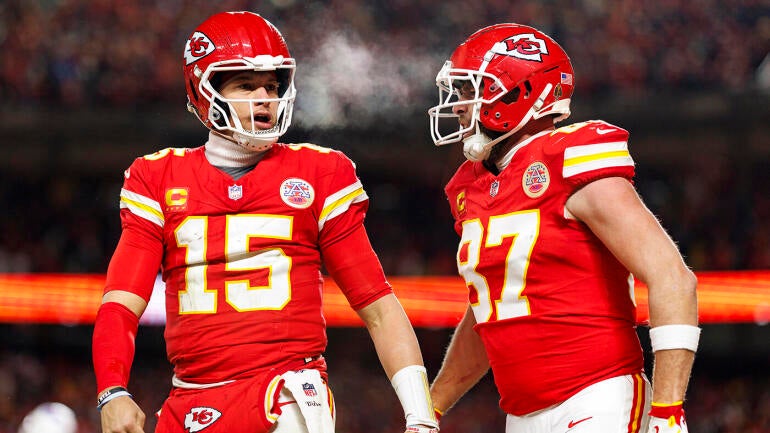
Three weeks into the season, it's once again clear that the Kansas City Chiefs offense is not what we expected it to be. Playing without top wide receivers Rashee Rice (serving six-game suspension for violating the league's personal conduct policy) and Xavier Worthy (shoulder injury on the third snap of the season), Kansas City -- which faces Lamar Jackson and the Baltimore Ravens on Sunday (4:25 p.m. ET, on CBS/Paramount+) -- has often seemed like it is operating within a constricted box.
Part of this is because the run game is so inefficient. Isiah Pacheco and Kareem Hunt are stuck running in mud. They're averaging a combined 3.6 yards per carry and they have totaled for exactly zero (yes, ZERO) runs of 12 yards or more. They're only even gaining 5-plus yards in 31.3% of their carries, below the league average of 33.4% of rushes, per TruMedia, so it's not like they're efficiently moving the ball and just not ripping off explosives.
Because they're not scared of the Chiefs running the ball, opponents have again tried to put a lid on Kansas City's offense and force Patrick Mahomes and Co. to operate in tight spaces. Kansas City has seen light boxes on 64.8% of its runs, per NFL Pro, the second-highest rate in the NFL, and the Chiefs still can't run the ball against those looks. And without a running attack that is even remotely threatening, the Chiefs have put tremendous pressure on the passing game to be the entirety of the offense, and defenses have been able to key on that and slow it down.
Mahomes is completing a career-low 59% of his passes and averaging a career-low 6.4 yards per attempt. He's thrown for just three touchdowns in three games. His biggest contributions have come with his legs. He's leading all quarterbacks in rushing yards because he's been forced to scramble on over 30% of his pressured dropbacks, per TruMedia. He's done an incredible job creating outside the structure of the offense on those opportunities and it's basically been the saving grace of an offense that has been inefficient when running with its backs and when throwing to its pass catchers. He's basically moving the chains by himself at times.
But it's worth examining exactly why they've struggled so much to move the ball through the air.
Deflated air attack
In fairness, a lot of it is personnel-related. The Chiefs knew they weren't going to have Rice for the first six games, but they at least thought that they'd have Worthy. Because of the way defenses play them, they've been forced to build the entire passing attack out of short passes, but those passes are going to limited receivers who can't make defenders miss and create chunk gains through the air. Worthy was supposed to be the early-season antidote to that while the Chiefs waited for Rice to get back and take over that role while Worthy expanded his game to include some of the deep stuff. That obviously hasn't happened because Worthy hasn't been out there, either.
Instead, Kansas City has trotted out Tyquan Thornton, Hollywood Brown and JuJu Smith-Schuster as its top trio of wideouts alongside tight end Travis Kelce, who looks like he's moving at late-career Jason Witten speed, and it's been a struggle to get the passing game going. Chiefs pass catchers have created an average of just 3.3 yards of separation on their targets, per NFL Pro, which is the seventh-lowest mark in the NFL. That's despite the fact that Mahomes has thrown into tight windows (less than 1 yard of separation) on only 11.4% of his throws. What that means is that even when Chiefs receivers are getting open enough to merit being targeted, they're not getting that open.
On the short passes that have made up essentially the entirety of Kansas City's offense (those thrown within 10 yards of the line of scrimmage), Mahomes has a -6.8% completion percentage over expectation, per NFL Pro, the fourth-lowest mark in the NFL ahead of only Trevor Lawrence, Caleb Williams and Russell Wilson. It's no surprise because on those throws, Kansas City wideouts have averaged the second-fewest yards of separation in the league. They can't separate from the coverage and they can't really create yards after the catch, either. Kansas City receivers have averaged only 4.5 yards after catch on those short completions, via TruMedia, which ranks 23rd in the NFL. The Chiefs have gotten 65.5% of their short passing yards post-catch, which ranks 26th.
Because those receivers are so limited, the intermediate passing game has essentially disappeared from the Kansas City offense. Through three games, Mahomes has thrown only 14 passes that traveled between 10 and 20 yards in the air. He's 7 of 14 on those throws for 144 yards and two touchdowns, good for a 126.2 passer rating and 0.53 EPA per dropback, via NFL Pro, but the volume isn't there. Only three passers have targeted that area of the field less often -- and that area of the field is where NFL offenses need to thrive these days with defenses trying to take away explosives.
Mahomes has actually made good on the promise to throw deep down the field more often this season. He's thrown 14 passes of 20-plus air yards, second-most in the NFL. Last year, he threw only 41 such passes all season, an average of around 2.5 per game.
Just like last year, though, the connection on those passes has been largely offline. Mahomes has completed only four of those 14 throws. The league-average completion rate on those passes is 36.1%, TruMedia, and the average catchable-ball rate is 69.4%. Mahomes' numbers on both fronts are much lower, with a 26.7% completion rate and 60% catchable-ball rate.
Some of that is probably due to personnel. He's almost exclusively targeting Thornton with his deep balls, going 3 of 11 for 120 yards and a touchdown when throwing to him and 1 of 3 for 49 yards on all other deep tosses. (The one completion came on a broken play to Hollywood late in the Week 1 loss to the Chargers.) Thornton dropped one of those deep balls and had the ball go off one of his hands on another, but nobody else is even threatening defenses down the field so he's the only game in town.
Some of the deep ball performance is on Mahomes himself, though. He flat-out missed a wide-open Thornton at least twice, and he's just not put enough arm strength on the ball on at least two other occasions. He's had two potential interceptions dropped, as well.
And it's not like Thornton has just been out there killing Mahomes. Two of his three deep catches were heavily contested and he did a terrific job to come down with the ball in those situations. He's playing well and doing his job to stretch the field vertically.
The Chiefs just don't have anything else to give their passing game any juice, so with the exception of a few schemed-up deep shots per game, they've been forced to build the plane almost entirely out of the quick game. An absolutely incredible 56.2% of Mahomes' throws have come within 2.5 seconds of the snap, per TruMedia. That's the fifth-highest rate among 163 qualifying quarterback seasons over the last five years. That's just not a recipe for stretching defenses -- especially when the guys you're targeting don't really get open and don't really do much with the ball in their hands.
The Chiefs are still weeks away from getting Rice back in the mix, but he should help tremendously given his ability to win in underneath areas of the field and then quickly turn and create yards after the catch. Worthy's probable return should help in that area as well, especially when he gets the ball on short crossing routes, and he should give the Chiefs another deep threat so that they aren't limited to Thornton when it comes to stretch the field vertically.
At this point in the season, though, it's disappointing that they haven't been able to get untracked, especially given that the reasons (lack of wide receiver production and underperformance from Kelce at tight end) are so similar to the ones that limited their passing game at times last year.


